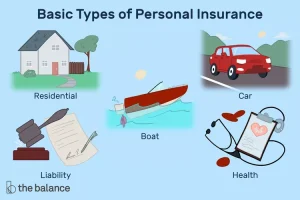“Auto insurance serves as a contractual agreement between you and an insurance company, offering financial protection in scenarios such as accidents, theft, or other covered incidents. This coverage typically encompasses various types, each serving a specific purpose.
1: Familiarize Yourself with State Minimum Requirements
Auto insurance mandates differ by state, making it crucial to understand your state’s minimum coverage requirements as per its laws. Commonly required coverage includes liability insurance, which covers injuries and property damage caused to others.
2: Assess Your Driving Patterns
Consider your driving habits and comfort level with risk. If you have a lengthy daily commute or frequently navigate high-traffic areas, opting for more comprehensive coverage might be prudent to safeguard against potential accidents.
3: Explore Different Types of Auto Insurance Coverage
– Liability Insurance: Covers injuries and property damage caused to others, often divided into bodily injury liability and property damage liability.
– Collision Coverage: Pays for repairs to your vehicle after a collision, regardless of fault.
– Comprehensive Coverage: Protects against non-collision incidents like theft, vandalism, or natural disasters.
– Uninsured/Underinsured Motorist Coverage: Provides protection if the at-fault party lacks insurance or has insufficient coverage.
4: Consider Your Vehicle’s Value
The value of your vehicle influences the type and amount of coverage needed. For newer or high-value cars, comprehensive and collision coverage may be essential. Conversely, older vehicles with lower values may warrant skipping these coverages to save on premiums.
5: Evaluate Your Risk Tolerance
Personal risk tolerance is a factor in coverage selection. Opting for higher coverage limits and additional coverage types may suit those seeking more financial protection and peace of mind.
6: Compare Rates Across Providers
Insurance premiums can vary widely among providers. Take time to shop around, gather quotes from multiple insurers, and compare coverage options. Consider factors beyond price, such as customer service and claims handling.
7: Bundle Policies for Discounts
Many insurers offer discounts for bundling multiple policies, such as auto and homeowners insurance. Bundling can result in cost savings, so inquire about available discounts when obtaining quotes.
8: Maintain a Clean Driving Record
A clean driving record can positively impact insurance premiums. Safe driving habits, avoiding accidents, and traffic violations can lead to lower rates and potential discounts.
9: Understand Deductibles and Premiums
Deductibles represent the amount paid out of pocket before insurance coverage begins. Choosing a higher deductible can lower premiums but increases the amount paid in the event of a claim. Find a balance that aligns with your budget.
10: Regularly Review and Update Your Policy
Life changes necessitate updates to your insurance policy. Regularly review and adjust your policy to ensure it reflects your current circumstances. Changes such as new vehicles, drivers, or addresses can affect coverage needs.
11: Utilize Safe Driving Discounts
Many insurers offer discounts for safe driving habits. Consider participating in programs that monitor driving behavior using telematics devices. Safe driving can lead to additional savings on premiums.
12: Understand Policy Exclusions and Limitations
Be aware of your policy’s exclusions and limitations. Certain situations, like using your vehicle for commercial purposes or intentional acts, may not be covered. Familiarity with these exclusions helps avoid surprises when filing a claim.
13: Consider Gap Insurance for New Vehicles
If financing or leasing a new vehicle, gap insurance is worth considering. This coverage pays the difference between the actual cash value of the vehicle and the loan or lease amount if it’s totaled.
14: Grasp No-Fault Insurance Concepts
In no-fault insurance states, each driver’s insurance covers their medical expenses and losses, regardless of fault. Understand the implications of no-fault insurance in your state.
15: Seek Professional Guidance
If navigating the insurance process feels daunting or if you have specific inquiries, seek advice from an insurance professional or broker. They can offer tailored guidance and help decipher complex policy details.
Conclusion
Selecting the appropriate auto insurance coverage demands a thoughtful and informed approach. By understanding your needs, assessing coverage options, and actively managing your policy, you can ensure adequate protection on the road. Regular policy reviews, safe driving practices, and staying abreast of potential discounts contribute to a comprehensive and cost-effective auto insurance strategy.”
